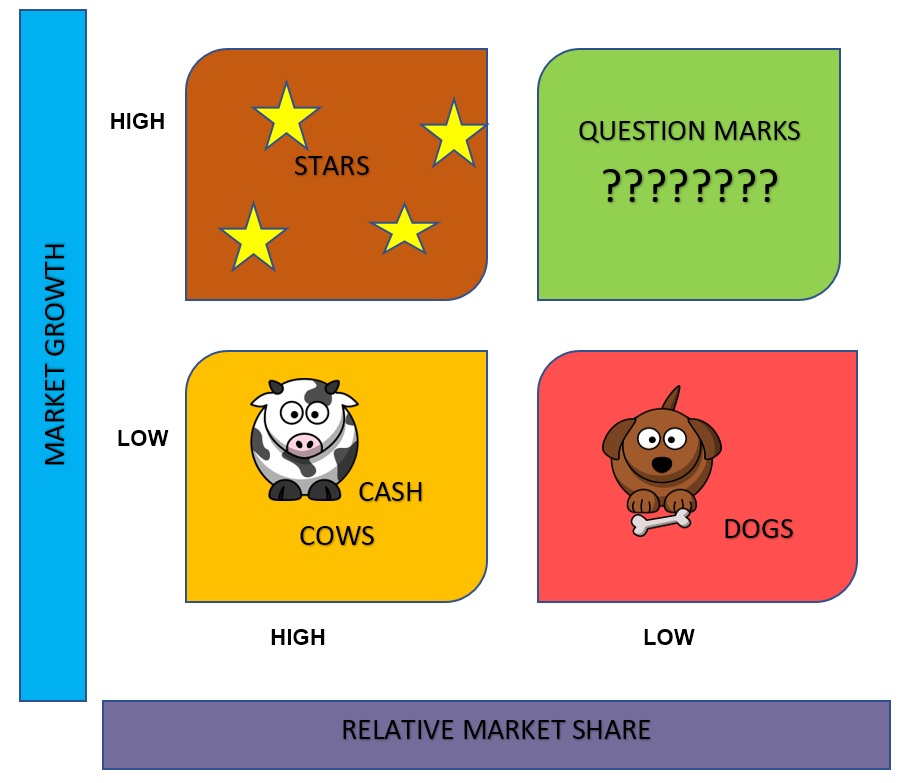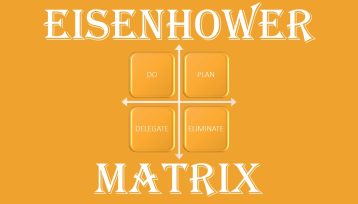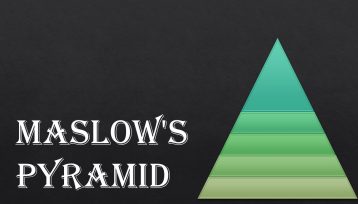The BCG matrix (also known as the growth-share matrix) is a strategic portfolio analysis tool. It helps companies visually assess the prospects of their product lines or business units.
The BCG matrix was created by a Boston Consulting Group in the late 1960s under the leadership of Bruce D. Henderson. The matrix consists of two axes: vertical – market growth and horizontal – relative market share.
Traditionally, these indicators are calculated as follows
Market growth is the ratio of the market volume for the current period to the market volume for the previous period. This indicator is expressed as a percentage. If market growth is less than 10%, the market is considered to have a low growth rate. If the market growth is higher than 10%, then, accordingly, the market is considered with a high growth rate.
The relative market share is the ratio of a company’s sales for a specific product to the sales of the same product of its strongest competitor. This indicator contains values from 0.1 to 10. If the relative market share is less than one, then the product has a weaker market position compared to the strongest competitor. If the relative market share is greater than one, then, accordingly, the product occupies a strong market position.

The combination of these two indicators makes it possible to classify a product by identifying four possible roles for a product or business unit.
Stars
High market growth – High relative market share
Stars are products or business units with a high market share in a fast-growing industry. The market share must be maintained and increased. Stars bring in a lot of revenue, but also require a lot of investment to ensure a high growth rate. Stars can become Cash cows if the industry growth slows and they are among the market leaders or Dogs with a low relative market share.
Cash cows
Low market growth – High relative market share
In this segment of the market growth is slow, but the income is received on a regular basis. The profits from Cash cows are used to finance Stars and Question Marks, which may become Cash cows in the future. Cash cows should be protected and controlled.
Dogs
Low market growth – Low relative market share
A segment with a low market share in a slow-growing industry. As a rule, a product or business unit is of a low level of profitability and takes up a lot of time on the part of the company. It is believed that Dogs should be sold.
Question marks
High market growth – Low relative market share
Question marks are unpredictable, they need to be studied since they can go to any cell of the matrix. If there is an option to switch Question marks to Stars, then you need to invest in this product or business unit. If you switch Question marks to Dogs, then you need to get rid of it.
As a result of the analysis using the BCG matrix, the company should have both high-growth products that require investment and low-growth products that provide cash in their product range. Each company makes decisions about what to do next, depending on their goals and tasks.
Find more analytical and strategic marketing information in the corresponding sections of the website.




